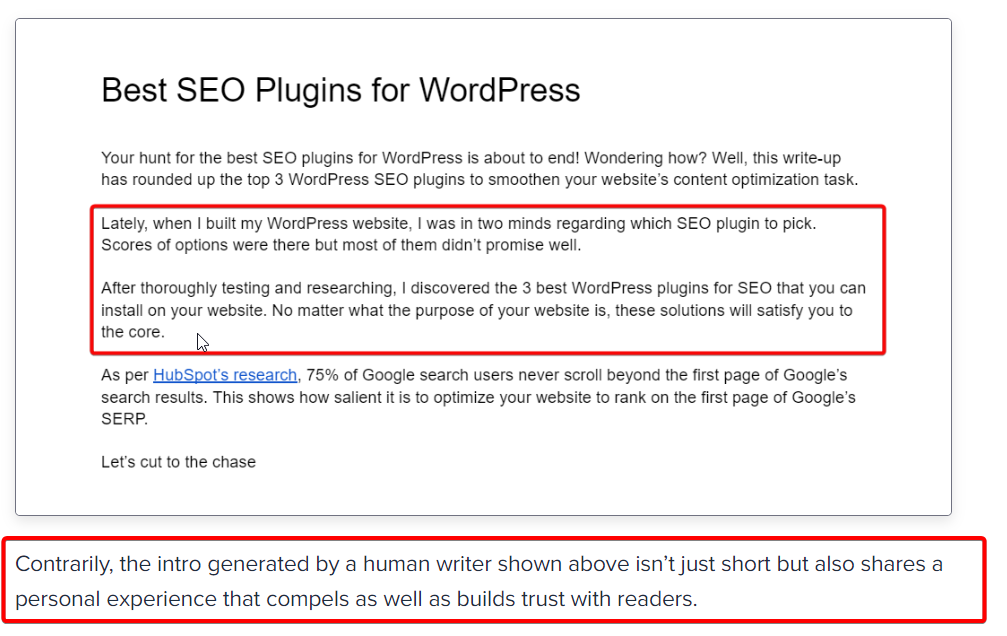How to Identify User Search Intent

Search engines like Google have got smarter these days. Google bots scan every webpage while crawling and check if the content piece has answered searchers’ queries optimally.
Based on the search intent, answer quality and other key SEO factors, bots rank webpages for different keywords and keyphrases after indexing.
Here, in this write-up, I will share with you some actionable tips regarding how to identify user search intent for different types of keywords.
Understanding User Search Intent
Simply put, user search intent is why someone is typing a particular keyword in the search engine search box. The reason for typing a particular keyword can be multiple things.
The keyword or query can be to buy a product or a service, find an answer to a question, enrich knowledge about a particular topic, or even visit a particular website.
For example, if someone types the keyword “Black Friday discounts for dresses in New York online stores”, their search intent here is to buy dresses. Hence, they are trying to find online stores offering discounts in New York to get the best deal.
User Search Intent Types
Depending on search patterns, search intent or keyword intent can take different forms. Each type of search intent can encompass various types of searches. Let’s check out the search intent types —
Informational search intent
Informational search intent is when users want to learn about any topic. The topic can be anything such as movie names, software types, the definition of any term, differences between two tools, features of a particular product, and so on.
This type of search usually starts with what, how, why, when, and who to get precise answers to questions. Usually, blog posts are geared to answer most informational search queries.
Optimizing content for informational searches serves various benefits, including brand visibility, trust-building, and new lead-targeting.
Following are some of the examples of informational search intent —
- What is an AI Article Writer?
- How to turn on screen record in an Android
- Why should you use WordPress?
- Difference between SEO and SEM
Commercial search intent
Commercial search intent encompasses keywords that people use to research a particular topic. Unlike informational intent, commercial intent keywords seek holistic info on a broad topic. Even for this type of keyword, bloggers and businesses tap into blog posts to craft their content and answer users.
Satisfying users with commercial search intent provides businesses with an opportunity to establish topical authority, create brand awareness, and boost organic traffic. Later, visitors may wish to take action too if they find your content satisfactory.
Despite its several perks, this type of keyword is difficult to rank higher in the SERPs due to high competition from 3rd party and affiliate websites.
Examples of commercial search intent keywords include —
- Best WordPress social media plugins
- Top 7 Jasper alternatives
- GetGenie vs. NeuronWriter
- Rolex watch review
Transactional search intent
Transactional search intent means a user types a keyword to take an action. Actions can include signing up for newsletters, requesting product free trials, looking for discounts, and also making purchases.
These types of keywords are money keywords and you must optimize your business content with these keywords to boost conversions.
Here are the examples of transactional search intent keywords —
- Price of iPhone 11
- Discount on Samsung refrigerator
- Buy MacBook
- Coupon for a content marketing course
Navigational search intent
Navigational search entails hunting for a specific website or a webpage. Unlike the above trio, users already know what they are trying to find in this type of search. This shows users already know something about your brand or website before making this type of search.
This knowledge includes website, webpage, business, product names, location, and so forth. Maybe your searcher knows about your brand name but doesn’t know about the products or services you sell. They can search with a navigational keyword “Brand name + Product”.
Or, they may already know about one of your products they are interested in but they want to know details about it. So, they can search with keywords like “Product Name” or “Product Name + Specific Info about the Product”.
Let’s take a look at some examples of navigational search —
- Wpmet products
- ElementsKit features
- XpeedStudio location
- GetGenie login
How to Identify User Search Intent – Actionable Tips
While some keywords like long-form ones make it easy to identify search intent with their patterns, others like seed keywords are complex to identify search intent. Regardless of the keyword type, the following tips will help you detect user search intent effectively —
Analyze Your Target Keywords
If the search intent is crystal clear with terms like what, why, how, etc., you are good to go. What if it’s not? No worries as you can do it effortlessly with keyword research tools like SEMRush.
Navigate to “Keyword Overview” after logging in and type your target keyword. Along with a whole lot of data, the tool will also show the intent of the keyword.
I have used the keyword “AI content writing tools” in SEMRush. It’s a commercial keyword and the tool also rightly showed it as a commercial one.

The tool calculated it based on the words contained within the keyword phrase and the SERP features existing in the search results of the target keyword.
Apart from that, you can also leverage the “Keyword Magic Tool” feature of SEMRush to filter keywords with a particular intent type.
I have tapped into the keyword “WordPress plugins” and ticked “Commercial” intent to filter only commercial keywords related to the target keyword.

Check SERP Results for your Keyword
Checking the actual SERP results for your keyword keyword is a must to get an idea about the search intent.
This is something you can do both manually and with tools like SEMRush. To find out manually, just type the keyword in the Google search box and spot the results straightaway.
To discover the SERP results with SEMRush, go to the “Keyword Overview” tab, type your keyword, and scroll down to the “SERP Analysis” section.

Once you click the search icon named “View SERP”, you can spot the snapshot of the actual search results, giving you a better overview of what the SERP for your keyword looks like.
An in-depth analysis of the SERP makes sure that you will learn about the intent behind a keyword or query and lets you get inspiration from the top results.
Do Something Extra to Nail Search Intent in Google’s Eyes
It is crucial to go above and beyond than just create the right type of page to nail search intent in Google’s eyes.
So, analyze the SERP and discover —
- What makes the top results best
- How deeply do the top results cover the topic?
- What angle do they use?
- How to create even better content by providing valuable information, data, examples, media, or user experience
Let’s take a look at the following example —
I crafted a content piece on “AI content marketing benefits, drawbacks, tools” for Cloudways. I included valuable info for the write-up. But I also added something in this write-up that no other similar write-up includes.
I talked about the difference between AI writing & human writing and demonstrated how human writing outperforms AI-generated content.
I crafted an intro for the topic “Best WordPress SEO Plugins”. Then, I asked ChatGPT to do the same. Here are the two results —


Over to You
Now that you know how to identify user search intent most effectively. So, before you write an article, make sure to identify search intent and optimize your content accordingly to break into the top results of SERP.
Follow the actionable tips outlined above to identify search intent for your keywords and develop killer content, keeping the search intent in mind. After that, getting outstanding results is a matter of time! And don’t forget to leverage GetGenie to conduct in-depth SERP analysis.

